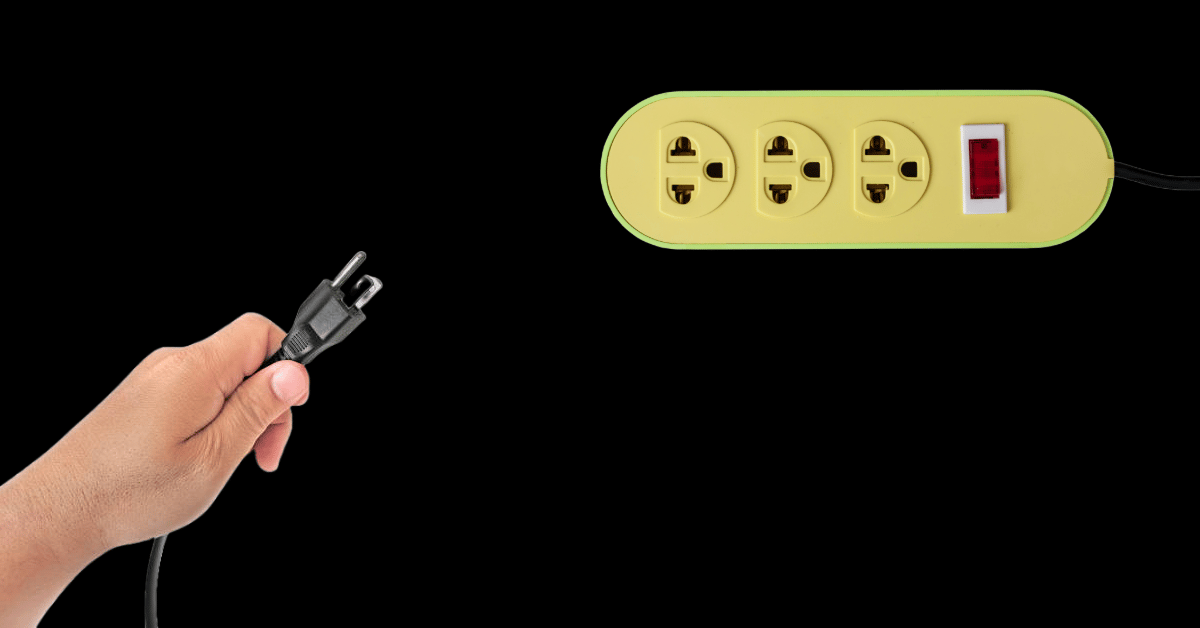
Have you ever had an imaginary friend? Do you still have one now?
You most likely do without even realising. (No, I’m not calling you a schizo and suggesting you take your meds. Unless you need to, and in that case, same girl, cheers!!) But think about it this way. You know more about your favourite creator’s breakup than your coworker’s life. You lowkey felt a twinge of hurt when that singer got a GF that wasn’t you. You “hang out” with streamers, influencers, podcasters, while you eat, while you shower, before you go to bed… but they wouldn’t recognise you if you tripped over their freaking ring light. Scary, right?
-Sophie Randell, Writer
PRESENTED BY PLANABLE
Get back your time (& your sanity) with 1 tool for all your content
When you’re handling content for dozens of stores or cities, it can feel impossible to keep track of it all.
Assets get lost. Posts get delayed. And approvals are spread across multiple email chains. You need a central place for it all to live so you can keep content going out on time.
Planable brings everything into one platform so you can:
✅ Collaborate across HQ & local teams in real time
✅ Share approvals, feedback & content, all in one place
✅ Crosspost to both corporate & local pages (including Google Business Profiles)
Every campaign, every location, all in one place 👇
WHAT’S HAPPENING IN MARKETING TODAY?
ChatGPT will allow “mature” convos, Trader Joe’s gets sued over PB&J & $15B in Bitcoin seized in raid

Sam Altman is a freaky ahh dude.
Open AI will allow NSFW conversations for ChatGPT users who can verify their age. So yes, you will soon be able to s*xt your chatbot. Can I see this going very wrong? Absolutely. Am I here for the freakazoid stories it’s about to provide? Hell yes I am. There’s this thing humans do whenever s*x is involved, and that’s make it extremely f*cking weird. But hey, I’m not here to yuck anyone’s yum, particularly not yours, Altman.
The OpenAI CEO said the company will add support for mature conversations when it launches age-gating in December. “As we roll out age-gating more fully and as part of our ‘treat adult users like adults’ principle, we will allow even more, like er*tica for verified adults,” Altman wrote. You know what, at this point in dystopia, why not. Let it all rip, I guess.
When you’re so petty you sue over a sandwich. See: Smucker's V Trader Joes.
Lol I love it when large companies have little fights like this. Like aww baby girl, are you mad? Did someone copy you? Do you wanna tell on them? On Monday, the Jif peanut butter maker, J.M. Smucker Company, sued Trader Joe’s in federal court, accusing the grocery chain of infringing trademarks of the Uncrustables brand.
Apparently, Trader Joes unlawfully copied the sandwich's round shape with crimped edges and imagery of a bitten sandwich revealing its filling. Oh, and the blue packaging is too similar 🥺. For an almost billion-dollar brand, shouldn’t you be like, idk, ending world hunger or something? Idk just a suggestion.
A record $15B in Bitcoin was just seized from alleged scam empire.
This story is crazy. Because the feds not only took down a widespread fraudulent operation, eliminating a decent chunk of the scam industry, but also several modern slavery scam compounds in Southeast Asia.
This is one of the biggest crackdowns on cybercrime in history. Authorities seized nearly 130,000 Bitcoin, worth $15B, from Cambodia’s Prince Group (a so-called “business conglomerate” secretly running forced-labour scam compounds). Led by CEO Chen Zhi, the group apparently trafficked people from over 60 countries to work in brutal “pig butchering” scams, swindling billions through fake investments.
Authorities hit 146 linked individuals and shell companies with sanctions, freezing assets including luxury London properties. Chen remains at large, but officials say this operation delivers a major blow to the global scam economy and its crypto-powered money laundering networks. That’s some real life Gotham sh*t.
-Sophie Randell, Writer
DEEP DIVE
Digital intimacy in the age of parasocial everything

We live in the age of parasocial everything, where our imaginary friends are no longer in the playground.
They have follower counts and sponsorship deals. Where connection is content, and intimacy is just a subscription away. You’re not just watching your fave creators—you know them.
Or at least, you think you do. You know their pets’ names, their trauma backstories, their favourite coffee orders. You cry with them, root for them, cancel them, forgive them. They feel close. Familiar, Yours.
Crazy part is - they don’t even know you exist.
That’s the weird thing about digital intimacy—it’s both real and fake at the same time. You can feel genuinely comforted by someone who would step over you in a grocery store because they’ve never seen your face. But that comfort still matters. It scratches an itch for connection in a world that’s quietly starving for it.
Brands have clocked this, too.
They’ve learned the language of closeness, replying to your comments, calling you “bestie,” pretending to have bad days. It’s not just marketing now; it’s emotional theatre. The more they make you feel like you’re in on the joke, the more you’ll stick around.
So yeah, maybe you do still have an imaginary friend. Only now, she’s a lifestyle vlogger with a skincare line and a podcast deal.
The illusion of intimacy
The term parasocial relationship was coined by psychologists Donald Horton and R. Richard Wohl in 1956 when televisions became widely available in the 1950s. It was a way to describe the one-sided attachments audiences formed with media figures. Think lonely delulu housewives who felt like the TV host was talking just to them.
Fast-forward to now, and the line between “famous person” and “friend” has completely evaporated. Creators invite us into their own damn bedrooms, cry on camera, eat on livestream. We get the full illusion of mutual closeness: the eye contact, the laughter, the vulnerability… everything but the reciprocity.
And look, maybe some people like it that way. There’s a kind of safety in it, to feel seen without being truly known, to experience connection without the risk of rejection. It’s intimacy… with a mouthguard.
The creator-as-best-friend economy
The arrival of social media didn’t just amplify parasocial bonds. It monetised them.
Creators now trade in emotional proximity. They call their audience “besties.” They build “communities” through Discords, private story tiers, Patreon memberships. It’s glorified (and paywalled) friendship.
The more you feel like you know them, the more likely you are to buy the merch, use the affiliate link, or follow them to their next platform. “Relatability” is no longer a personality trait, but a business model.
But what happens when the thing we crave most (connection) is also the thing being sold back to us?
Enter: brands as the new influencers
As creators mastered the art of digital intimacy, brands quickly followed suit. As they do so well.
They stopped trying to impress us and started trying to befriend us. Wendy’s tweets like your chaotic mutual. Ryanair flirts in the comments. Duolingo thirst-posts its owl. Skincare brands cry about their “bad skin days.”
Brands have learned the parasocial language. They talk like a person, feel like a friend, and perform vulnerability just enough to make people trust them. And it works frighteningly well.
A brand that feels emotionally human can foster loyalty that outpaces logic.
In fact, according to research by Motista, emotionally connected customers have a 306% higher lifetime value. And the real catch of all this is that digital closeness doesn’t even make us less lonely.
In fact, it often highlights the absence of real, reciprocal connection. You can feel deeply connected to someone who doesn’t know you exist, thus, that connection has no infrastructure. No shared history, no physical presence, no give-and-take.
Traditional communities (friends, neighbours, local groups) require effort and vulnerability. Digital ones offer immediacy and control. You can leave without consequence. Ghost at any given point. You can mute the mess.
It’s intimacy without maintenance, and that’s both the appeal and the problem.
This is essentially emotional outsourcing. We turn to creators for advice, validation, companionship. We look to brands for comfort, identity, and a sense of belonging and identity.
It’s no accident that fandom culture, influencer culture, and brand “communities” all exploded in tandem with a global loneliness crisis. The less we get from each other, the more we seek from the all-consuming, soul-sucking feed.
And to be fair, there is something beautiful in the connection that can form online. Many people find genuine friendship and meaning there. But it’s also worth asking: when everything becomes parasocial, when even your fkn oat milk company is trying to “relate”… do we lose the distinction between being cared for and being marketed to?
This is the paradox of digital intimacy.
We’re more emotionally exposed online than ever, yet our relationships are increasingly one-sided.
We crave connection so deeply that we’ll take it in any form, even simulated. Even sold. And as creators and brands continue to perfect the illusion of closeness, we’re left with an uncomfortable question: if intimacy can be manufactured, does it still count?
-Sophie Randell, Writer
TREND PLUG
WAIT

This one’s for the overthinkers, overtalkers, and chronic social-mistake replayers.
The sound comes from one of the most dramatic moments in Hamilton, by way of the song "The World Was Wide Enough." But TikTok’s turned it into a frantic freeze-frame for the smallest, dumbest mistakes imaginable.
The setup is always the same: a creator sees a disaster unfolding and yells “WAIT!” with Broadway-level panic. The humour comes from the false sense of urgency, as if correcting a typo or stopping a friend from oversharing is life or death.
My fav examples include:
The best versions exaggerate the “WAIT!” I'm talking wide eyes, an overly dramatic reach toward the camera, or a slow-motion lunge.
How you can jump on this trend
Use the sound for any “too late to fix it” moment. Start with a calm setup, then panic as the word WAIT! hits. Visual gags, exaggerated gestures, or freeze-frames work best.
A few ideas to get you started:
When you hit “Reply All” instead of “Reply”
When the intern almost posts without approval
When you realise you scheduled the campaign for AM instead of PM
- abdel khalil, brand & marketing executive
FOR THE GROUP CHAT
😂Yap’s funniest home videos: Can he even get out of that?
❤How wholesome: Buying from vendors with no customers
😊Soooo satisfying: Bottles breaking
🍝What you should make for dinner tonight: Garlic Chili Oil Spag
ASK THE EDITOR

How fast do trends die and how can you make "timeless" trends reactivate and be relevant to your company/brand? - Amanda
Hey Amanda,
Many trends cycle back through after you think they've died out. So if there's a trend you like and you think it's passed, there's no harm in recreating it. But if you're having to think really hard about how to shove your brand's message into a trend, it's probably not the right kind of content for you.
Trend content can be a good way to get seen by new audiences, or even go viral. But your brand's social strategy shouldn't rely just on recreating trends. Not every trend will suit your niche, and if you're creating trend content just to look cool, it's not going to help you reach the right audience in the long run.
You're better off developing a content strategy that hits on a human truth that intersects with your brand and is relatable to your audience. Then, use that as a filter to decide which trends you can adapt to suit that human truth. Otherwise, you run the risk of creating too much random content and confusing your brand's message.
- Charlotte Ellis, Editor ♡
